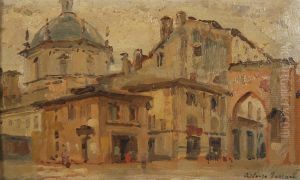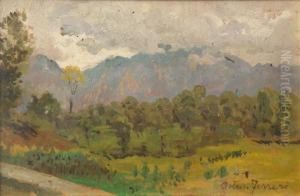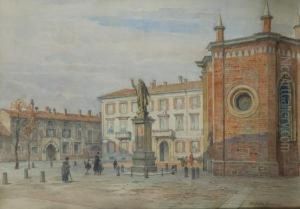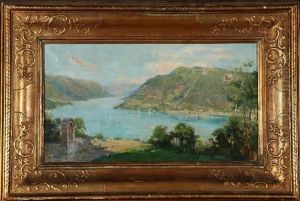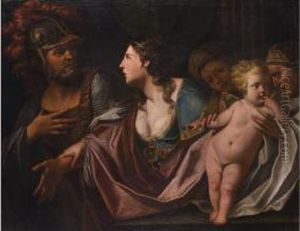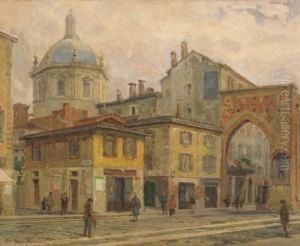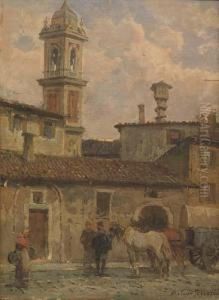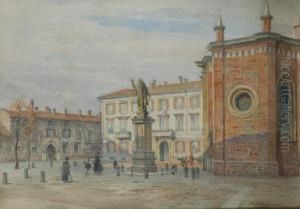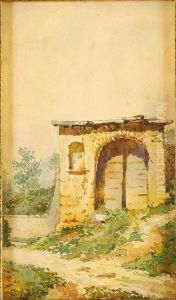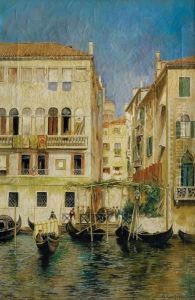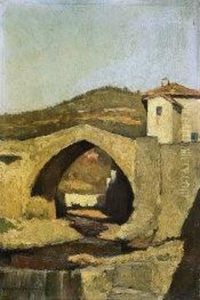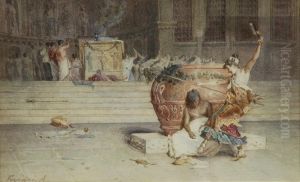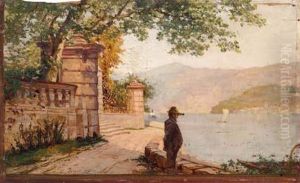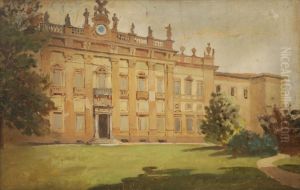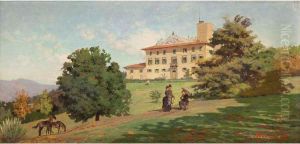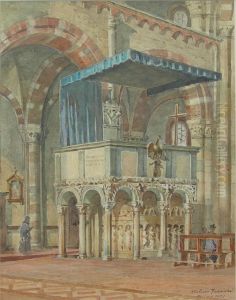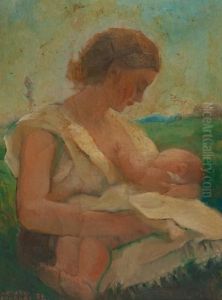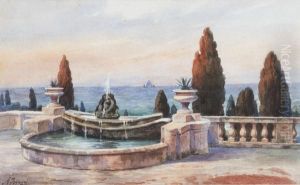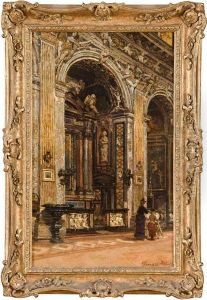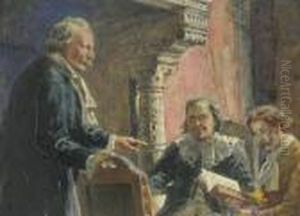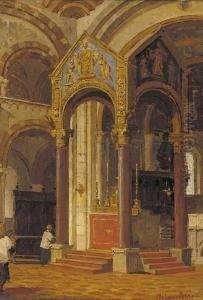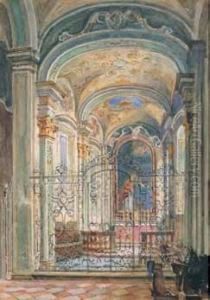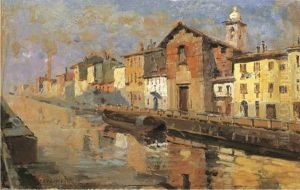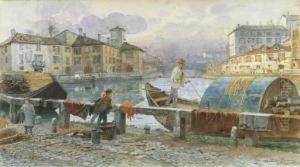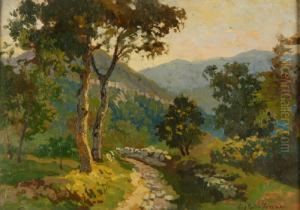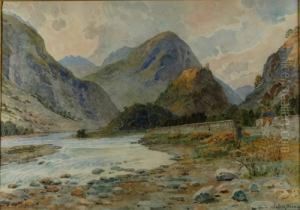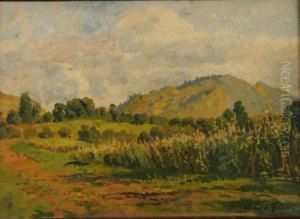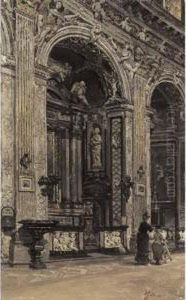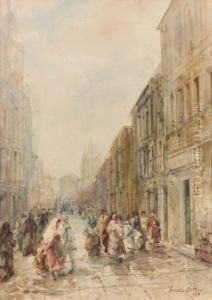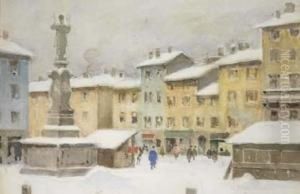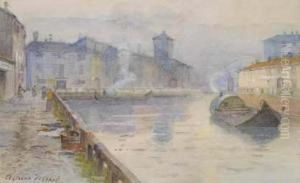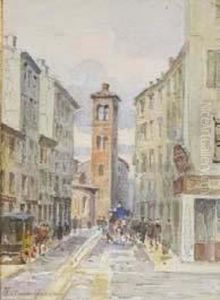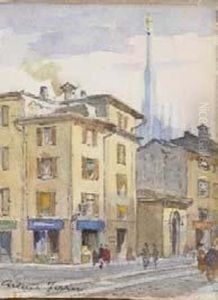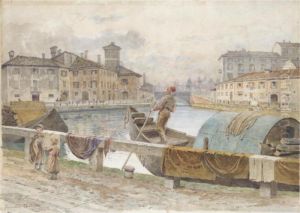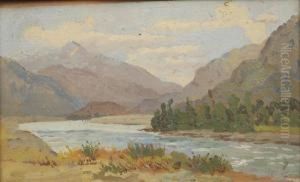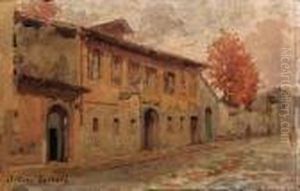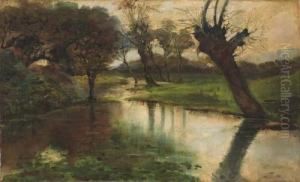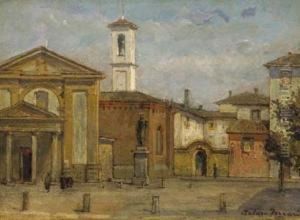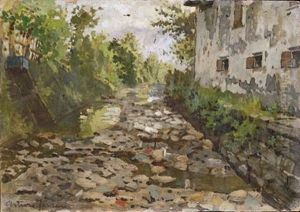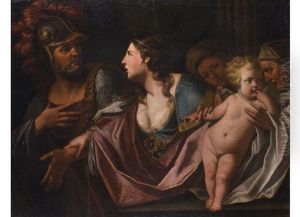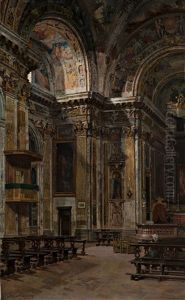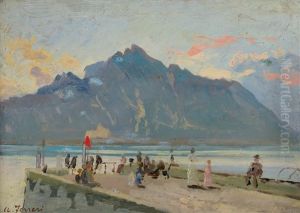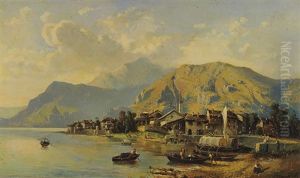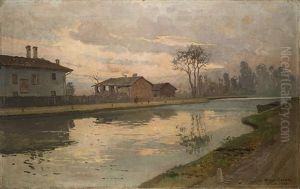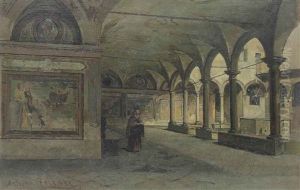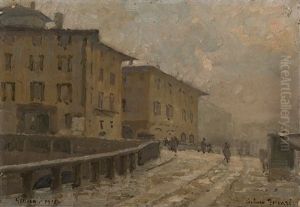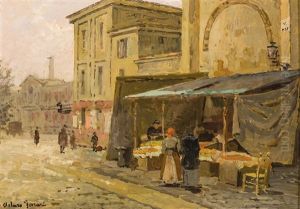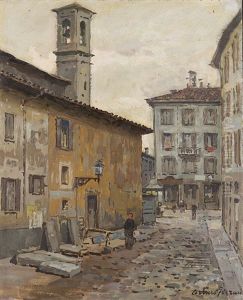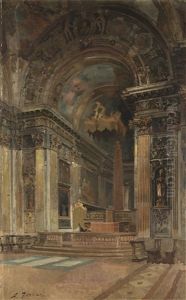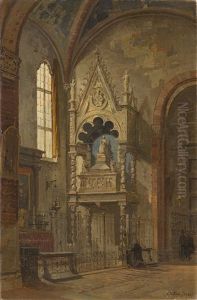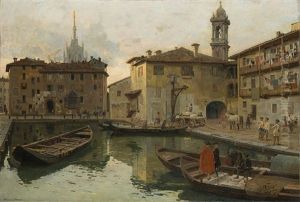Arturo Ferrari Paintings
Arturo Ferrari was an Italian painter born on March 23, 1861, in Milan, Italy. He is known for his cityscapes and landscapes, which are characterized by a particular attention to detail and a unique treatment of light and color that captures the mood of the scenes he depicted.
Ferrari was initially trained at the Brera Academy, which is one of the most prestigious art schools in Milan. He studied under Giuseppe Bertini, a well-known artist of the time. Despite this formal training, Ferrari later distanced himself from the academic style. He was influenced by the Scapigliatura movement, an Italian artistic movement similar to the more widely known Bohemianism, and its main figures like Tranquillo Cremona and Daniele Ranzoni played a role in his early development as an artist.
Throughout his career, Ferrari worked in various genres, but he is most esteemed for his urban scenes. His works often depicted the streets of Milan, showing everyday life with a sense of immediacy and a touch of sentimentality. He captured the changing face of his city during the late 19th and early 20th centuries, a period of great transformation due to the industrial revolution.
Ferrari's painting technique involved the use of thin layers of oil paint, which allowed him to achieve a luminous quality. His palette was typically subdued, employing soft, muted colors that contributed to the overall atmosphere of his works. The play of light and shadow in his urban and rural scenes creates a sense of depth and realism that was well received by critics and the public alike.
Arturo Ferrari continued to paint and exhibit his work throughout Italy and abroad until his death on January 7, 1932. His legacy is that of a painter who managed to capture the essence of his time and place with a delicate and refined brushwork. Today, his works can be found in various Italian museums and galleries, and he is celebrated as one of the notable artists of his era who contributed to the Italian art scene with a distinctive voice.
